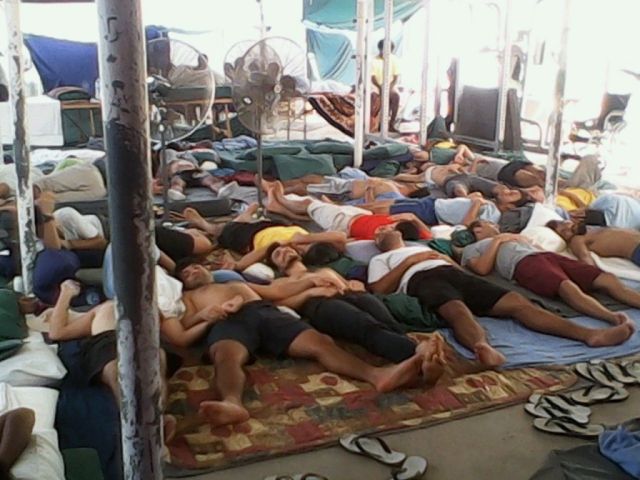
The world has reacted in anger, solidarity and protest to US President Donald Trump’s Muslim immigration ban.
Taxi drivers have gone on strike, major corporations such as Google are condemning it and protests continue at airports across the US.
Germany’s Angela Merkel and Britain’s Theresa May, not known as advocates for human rights, are speaking up in opposition.
However, there is one government supporting Trump's immigration ban — Australia. The similarities between the two countries’ refugee and immigration policies are telling even as they bicker over the refugee “deal”.
US, Australia similarities
Australia has become a world leader in creating and enforcing refugee policies that stop refugees coming into the country, no matter how dire the situation they are fleeing.
Governments across Europe are looking to Australia for inspiration, particularly on how to stop the boats from Syria. But Trump is taking it to a whole new level.
This prompted former immigration minister Scott Morrison to support Trump’s policy saying on January 30 that “the world would love to have [Australia’s] borders”, but it “is catching up”.
Opposition leader Bill Shorten responded by criticising Trump and talking up multiculturalism. This caused an avalanche of comments on social media condemning Labor's refugee policy and pointing out its similarities to Trump's policy.
Trump has completely suspended the US refugee admission system for 120 days, including the Syrian refugee program indefinitely. He has launched wide-scale deportations and banned anyone from entering the US from Iran, Iraq, Syria, Yemen, Somalia, Libya and Sudan.
Australia’s system has a similar effect, albeit more subtle. With boat turnbacks, indefinite offshore detention and resettlement in PNG and Nauru, Australia’s policy stops refugees, such as from Sri Lanka, who have no option other than to flee via boat, from ever seeking refuge in Australia.
Many refugees in Australia live on bridging visas, in constant fear of deportation and with the knowledge that any breach of the law could result in them being sent back to detention indefinitely.
A raft of new laws has been enacted giving the government the power to cancel visas on “character grounds”.
Refugees who come by boat also face discrimination from the immigration department: being able to take citizenship tests and the length of the process.
Last year’s proposal from the Turnbull government of lifetime bans for any asylum seeker who comes to Australia via boat would allow for this to be taken to a whole new level.
Another similarity is how both governments see themselves as above the law when it comes to refugee and immigration policies.
The US government has instructed immigration officials to ignore the orders of federal judges, while the Australian government has virtually ignored the PNG Supreme Court decision that Manus Island detention centre is unconstitutional and it often seeks to deport people without going through proper legal proceedings.
US refugee deal
At the time of writing, there are conflicting reports over Trump’s position on the deal. Many of the refugees in Australia's detention centres are from countries that are on the US banned citizen’s list.
The Guardian on February 1 reported that the White House said it is still going ahead with the deal and would accept 1250 of the 1600 refugees currently detained on Manus Island and Nauru. But they will be subjected to an extreme vetting process, that may mean no one gets through.
The Washington Post on February 2 reported that Turnbull’s phone call with Trump was very tense, with the refugee deal being the main topic. Trump announced on Twitter it “was the worst deal ever”.
Trump later tweeted that it was a “dumb deal”. The next day the White House said the deal was still on.
The US refugee deal continues to look more like politicking and less like a “solution” with the Turnbull government still intent on pushing people to accept resettlement in Nauru and PNG or go back to the countries they fled from.
As Trump and Turnbull compete to see who is more racist and cruel towards refugees, many people in Manus Island and Nauru continue to suffer, having been in these hell holes for more than 3 years. The only humane solution is to bring them here.
Regardless of the tensions, both governments are approaching refugee and immigration policy from the same position — using fear to maintain power by redirecting working class anger at the economic situation onto migrants and refugees.
Both governments’ approach to the worldwide refugee crisis, which the UN puts at more than 20 million people, by building walls rather than by working towards solutions.
This policy by centre-right governments has emboldened the far right. In France, the government has just finished constructing a wall where “The Jungle” refugee camp and community used to be.
As the world faces greater economic and climate turmoil, the popularity of far right anti-immigration parties in Europe, Trump in the US and Hanson in Australia has risen.
The need for solidarity with the struggles for migrant and refugee rights is greater now than ever before. As one placard at a protest outside the Los Angeles airport in the US said: “From Australia to the USA — open the borders — let them stay.”
Like the article? Subscribe to Green Left now! You can also like us on Facebook and follow us on Twitter.